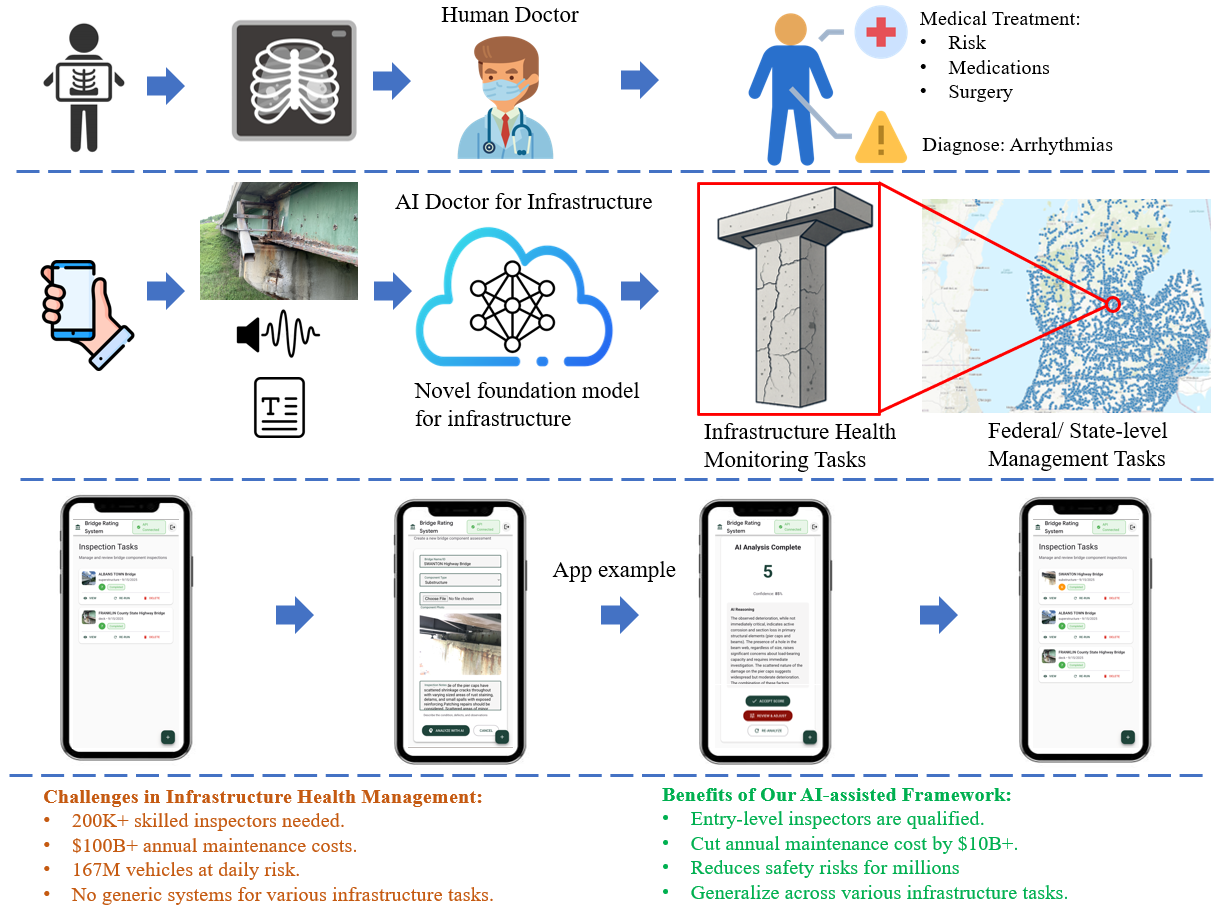Technology Title
InfrastructureGPT: A Scalable Multimodal Foundation Model for Intelligent Infrastructure Maintenance
Tech Focus Area
Enhanced Inspection
Abstract
Problem Statement: Maintaining and preserving critical infrastructure, e.g., bridges, pipelines, and railways, is an urgent national challenge due to: (1) High-skill labor needs: over 200K experienced inspectors are required, (2) Aging assets: 45% of U.S. bridges and more than half of pipelines are over 50 years old, and (3) High costs: annual capital expenditures exceed $100B. Current inspection and management methods rely on custom, single-purpose models that fall short because they lack: (1) Scalability: each new task requires a separate model, raising costs and complexity, (2) Adaptability: novel failure types require retraining or new models, adding significant cost in data collection and labeling, (3) Policy alignment: narrow task-specific metrics fail to meet federal/state multi-scale decision-making needs, and (4) Efficiency: dependence on large labeled datasets makes deployment costly (>$100K per task) and slow (6+ months). These limitations prolong repair cycles, increase manpower needs, drive up costs, and reduce mission readiness.
Innovation Solution: InfrastructureGPT is an “AI doctor” system for infrastructure powered by foundation models. This scalable, adaptable, and multimodal framework generalizes across real-world tasks—from system-level monitoring (e.g., crack detection, remaining life, serviceability indices) to state/federal-level management (e.g., backlog reduction, cost estimation)—without retraining from scratch. Unlike conventional single-task AI, InfrastructureGPT uses transfer learning to support multiple tasks simultaneously and integrates heterogeneous data sources.
Benefits to the DoW: InfrastructureGPT can reduce maintenance costs by cutting reliance on high-skill inspections and minimizing downtime due to closures. It improves condition assessment accuracy and extends the lifespan of infrastructure. By integrating the emerging AI foundation model design with infrastructure maintenance expertise, it offers a scalable and commercially viable solution for infrastructure health monitoring and management, supporting multiple real-world tasks while reducing the rehabilitation backlog. If 10% of the poor infrastructure is rehabilitated through reinforcement instead of replacement because of discrete failures, $20B+ in capital expenditure can be saved.
Innovation Challenges: Key challenges include workflow integration, user training, and trust. To address this, we incorporate a human-in-the-loop approach for oversight and transparency. Cost is also a barrier, with >$500K needed for initial model training and comparable annual operating costs. Adaptive training, modular software, and phased deployment will mitigate adoption costs and risks.
Demonstration Results: We developed a mobile app and cloud server that allow entry-level inspectors to capture field data with smartphones. The system converts inputs into interpretable outputs such as condition ratings, crack density, and width, aligned with policy frameworks.
Graphic





